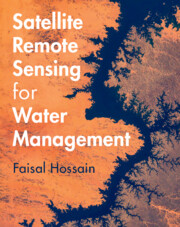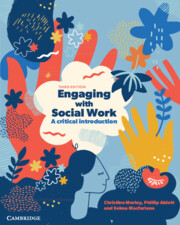Refine search
Actions for selected content:
37555 results in Cambridge Textbooks
8 - Social work practice
-
- Book:
- Engaging with Social Work
- Published online:
- 09 October 2025
- Print publication:
- 23 October 2025, pp 236-265
-
- Chapter
- Export citation
References
-
- Book:
- Engaging with Social Work
- Published online:
- 09 October 2025
- Print publication:
- 23 October 2025, pp 378-423
-
- Chapter
- Export citation
12 - Big Social Interactions
-
- Book:
- Big Data in the Psychological Sciences
- Published online:
- 23 October 2025
- Print publication:
- 23 October 2025, pp 224-242
-
- Chapter
- Export citation
4 - What can we do? A critical response to social contexts
-
- Book:
- Engaging with Social Work
- Published online:
- 09 October 2025
- Print publication:
- 23 October 2025, pp 109-133
-
- Chapter
- Export citation
23 - Planetary Geomorphology
-
-
- Book:
- Essentials of Geomorphology
- Published online:
- 12 November 2025
- Print publication:
- 23 October 2025, pp 495-520
-
- Chapter
- Export citation
Reviews
-
- Book:
- Big Data in the Psychological Sciences
- Published online:
- 23 October 2025
- Print publication:
- 23 October 2025, pp ii-ii
-
- Chapter
- Export citation
Glossary
-
- Book:
- Engaging with Social Work
- Published online:
- 09 October 2025
- Print publication:
- 23 October 2025, pp 362-377
-
- Chapter
- Export citation
3 - The new normal: Contemporary and emerging challenges and opportunities for social work
-
- Book:
- Engaging with Social Work
- Published online:
- 09 October 2025
- Print publication:
- 23 October 2025, pp 68-108
-
- Chapter
- Export citation
2 - What Is Small Data?
-
- Book:
- Big Data in the Psychological Sciences
- Published online:
- 23 October 2025
- Print publication:
- 23 October 2025, pp 13-30
-
- Chapter
- Export citation

Essential Mathematics for Convex Optimization
-
- Published online:
- 22 October 2025
- Print publication:
- 26 June 2025
-
- Textbook
- Export citation

Wireless Communications and Machine Learning
-
- Published online:
- 21 October 2025
- Print publication:
- 03 July 2025
-
- Textbook
- Export citation

Quantum Information
- A First Course
-
- Published online:
- 17 October 2025
- Print publication:
- 26 June 2025
-
- Textbook
- Export citation

English Phonetics and Phonology
- An Introduction
-
- Published online:
- 17 October 2025
- Print publication:
- 10 July 2025
-
- Textbook
- Export citation

Understanding International Security
- Theory and Practice
-
- Published online:
- 11 October 2025
- Print publication:
- 30 October 2025
-
- Textbook
- Export citation

Satellite Remote Sensing for Water Management
-
- Published online:
- 10 October 2025
- Print publication:
- 04 September 2025
-
- Textbook
- Export citation

Engaging with Social Work
- A Critical Introduction
-
- Published online:
- 09 October 2025
- Print publication:
- 23 October 2025
-
- Textbook
- Export citation
10 - The Evolution of Language
-
- Book:
- Evolutionary Psychology
- Published online:
- 30 October 2025
- Print publication:
- 09 October 2025, pp 261-296
-
- Chapter
- Export citation
8 - The Evolutionary Psychology of Social Behaviour: Reciprocity and Conflict
-
- Book:
- Evolutionary Psychology
- Published online:
- 30 October 2025
- Print publication:
- 09 October 2025, pp 195-225
-
- Chapter
- Export citation
Index
-
- Book:
- Evolutionary Psychology
- Published online:
- 30 October 2025
- Print publication:
- 09 October 2025, pp 486-492
-
- Chapter
- Export citation
5 - Cognitive Development, Modularity and Innateness
-
- Book:
- Evolutionary Psychology
- Published online:
- 30 October 2025
- Print publication:
- 09 October 2025, pp 117-140
-
- Chapter
- Export citation
